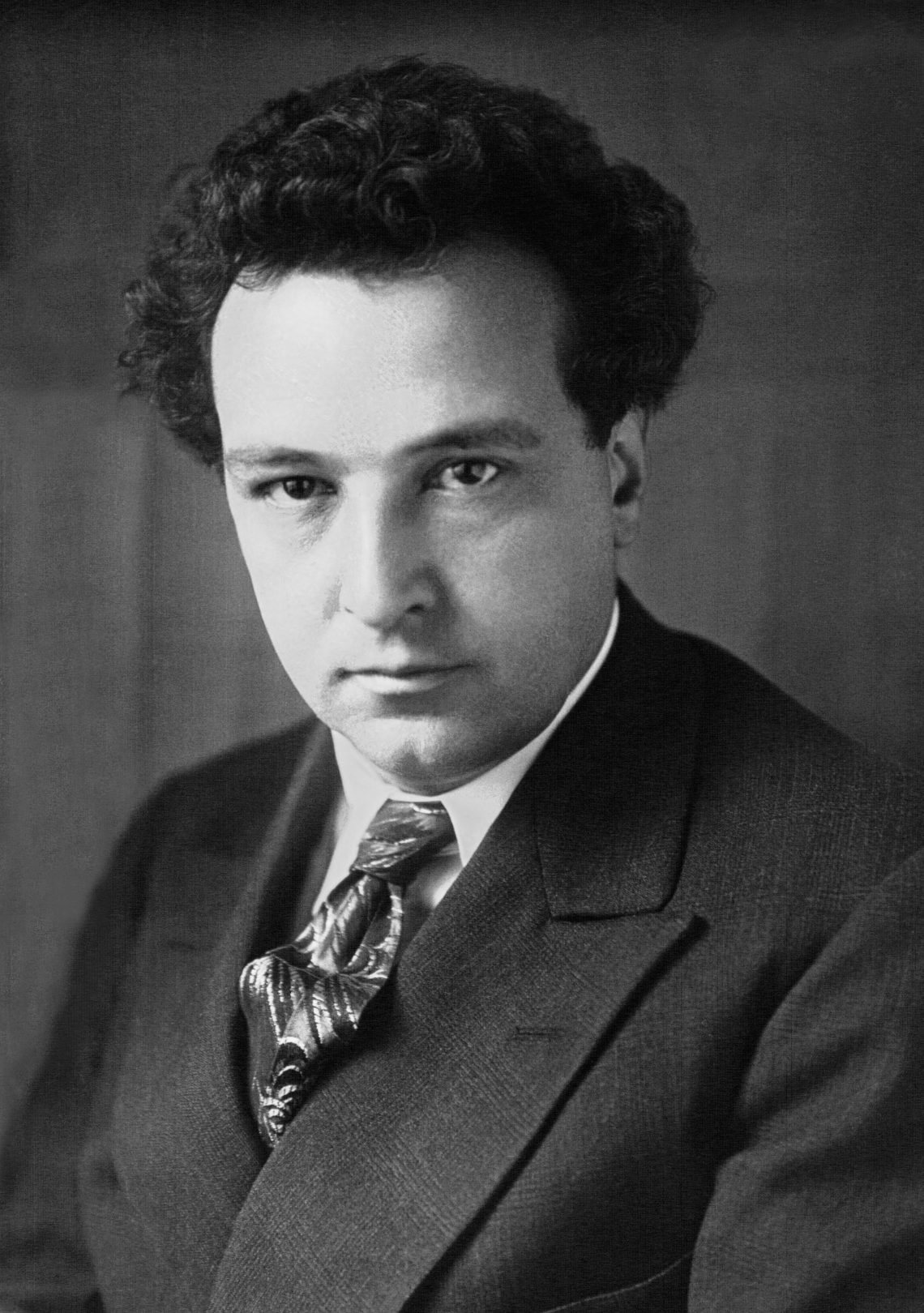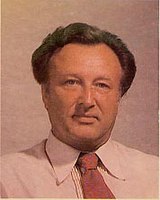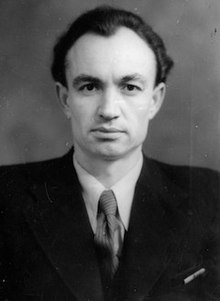
Arthur Honegger |
Contents
Arthur Honegger
Honegger is a great master, one of the few modern composers who have a sense of the majestic. E. Jourdan-Morange
The outstanding French composer A. Honegger is one of the most progressive artists of our time. The whole life of this versatile musician and thinker was a service to his beloved art. He gave his versatile abilities and strength to him for almost 40 years. The beginning of the composer’s career dates back to the years of the First World War, the last works were written in 1952-53. Peru Honegger owns over 150 compositions, as well as many critical articles on various burning issues of contemporary musical art.
A native of Le Havre, Honegger spent much of his youth in Switzerland, the homeland of his parents. He studied music from childhood, but not systematically, either in Zurich or in Le Havre. In earnest, he began to study composition at the age of 18 at the Paris Conservatory with A. Gedalzh (M. Ravel’s teacher). Here, the future composer met D. Milhaud, who, according to Honegger, had a great influence on him, contributed to the formation of his tastes and interest in modern music.
The creative path of the composer was difficult. In the early 20s. he entered the creative group of musicians, which critics called the “French Six” (according to the number of its members). Honegger’s stay in this community gave a significant impetus to the manifestation of ideological and artistic contradictions in his work. He paid a notable tribute to constructivism in his orchestral piece Pacific 231 (1923). Its first performance was accompanied by a sensational success, and the work received a noisy fame among lovers of all kinds of new products. “I originally called the piece Symphonic Movement,” Honegger writes. “But… when I finished the score, I titled it Pacific 231. Such is the brand of steam locomotives that must lead heavy trains” … Honegger’s passion for urbanism and constructivism is also reflected in other works of this time: in the symphonic picture “Rugby” and in “Symphonic Movement No. 3”.
However, despite the creative ties with the “Six”, the composer has always been distinguished by the independence of artistic thinking, which eventually determined the main line of development of his work. Already in the mid-20s. Honegger began to create his best works, deeply humane and democratic. The landmark composition was the oratorio “King David”. She opened a long chain of his monumental vocal and orchestral frescoes “Calls of the World”, “Judith”, “Antigone”, “Joan of Arc at the stake”, “Dance of the Dead”. In these works, Honegger independently and individually refracts various trends in the art of his time, strives to embody high ethical ideals that are of eternal universal value. Hence the appeal to ancient, biblical and medieval themes.
Honegger’s best works have bypassed the largest stages of the world, captivating listeners with emotional brightness and freshness of the musical language. The composer himself actively performed as a conductor of his works in a number of countries in Europe and America. In 1928 he visited Leningrad. Here, friendly and creative relations were established between Honegger and Soviet musicians, and especially with D. Shostakovich.
In his work, Honegger was looking not only for new plots and genres, but also for a new listener. “Music must change the public and appeal to the masses,” the composer argued. “But for this, she needs to change her character, become simple, uncomplicated and in large genres. People are indifferent to composer technique and searches. This is the kind of music I tried to give in “Jeanne at the stake”. I tried to be accessible to the average listener and interesting for the musician.”
The composer’s democratic aspirations found expression in his work in the musical and applied genres. He writes a lot for cinema, radio, drama theater. Becoming in 1935 a member of the French People’s Music Federation, Honegger, together with other progressive musicians, joined the ranks of the anti-fascist Popular Front. During these years, he wrote mass songs, made adaptations of folk songs, participated in the musical arrangement of performances in the style of mass festivities of the Great French Revolution. A worthy continuation of Honegger’s work was his work in the tragic years of the fascist occupation of France. A member of the resistance movement, he then created a number of works of deeply patriotic content. These are the Second Symphony, Songs of Liberation and music for the radio show Beats of the World. Along with vocal and oratorio creativity, his 5 symphonies also belong to the highest achievements of the composer. The last of them were written under the direct impression of the tragic events of the war. Telling about the burning problems of our time, they became a significant contribution to the development of the symphonic genre of the XNUMXth century.
Honegger revealed his creative credo not only in musical creativity, but also in literary works: he wrote 3 musical and nonfiction books. With a wide variety of topics in the composer’s critical heritage, the problems of contemporary music and its social significance occupy a central place. In the last years of his life, the composer received worldwide recognition, was an honorary doctor of the University of Zurich, and headed a number of authoritative international musical organizations.
I. Vetlitsyna
Compositions:
operas – Judith (biblical drama, 1925, 2nd ed., 1936), Antigone (lyric tragedy, lib. J. Cocteau after Sophocles, 1927, tr “De la Monnaie”, Brussels), Eaglet (L’aiglon , jointly with G. Iber, based on the drama by E. Rostand, 1935, set in 1937, Monte Carlo), ballets – Truth is a lie (Vèritè – mensonge, puppet ballet, 1920, Paris), Skating-Ring (Skating-Rink, Swedish roller ballet, 1921, post. 1922, Champs Elysees Theatre, Paris), Fantasy (Phantasie, ballet- sketch, 1922), Under Water (Sous-marine, 1924, post. 1925, Opera Comic, Paris), Metal Rose (Rose de mètal, 1928, Paris), Cupid and Psyche’s Wedding (Les noces d ‘Amour et Psychè, on the themes of “French Suites” by Bach, 1930, Paris), Semiramide (ballet-melodrama, 1931, post. 1933, Grand Opera, Paris), Icarus (1935, Paris), The White Bird Has Flew ( Un oiseau blanc s’est envolè, for an aviation festival, 1937, Théâtre des Champs-Élysées, Paris), Song of Songs (Le cantique des cantiques, 1938, Grand Opera, Paris), The Birth of Color (La naissance des couleurs, 1940, ibid.), The Call of the Mountains (L’appel de la montagne, 1943, post. 1945, ibid.), Shota Rustaveli (together with A. Tcherepnin, T. Harshanyi, 1945, Monte Carlo), Man in a Leopard Skin (L’homme a la peau de lèopard, 1946); operetta – The Adventures of King Pozol (Les aventures du roi Pausole, 1930, tr “Buff-Parisien”, Paris), Beauty from Moudon (La belle de Moudon, 1931, tr “Jora”, Mézières), Baby Cardinal (Les petites Cardinal, with J. Hibert, 1937, Bouffe-Parisien, Paris); stage oratorios – King David (Le roi David, based on the drama by R. Moraks, 1st edition – Symphonic psalm, 1921, tr “Zhora”, Mezieres; 2nd edition – dramatic oratorio, 1923; 3rd edition – opera -oratorio, 1924, Paris), Amphion (melodrama, 1929, post. 1931, Grand Opera, Paris), oratorio Cries of Peace (Cris du monde, 1931), dramatic oratorio Joan of Arc at the stake (Jeanne d’ Arc au bucher, text by P. Claudel, 1935, Spanish 1938, Basel), oratorio Dance of the Dead (La danse des morts, text by Claudel, 1938), dramatic legend Nicolas de Flue (1939, post. 1941, Neuchâtel ), Christmas Cantata (Une cantate de Noel, in liturgical and folk texts, 1953); for orchestra – 5 symphonies (first, 1930; second, 1941; Liturgical, Liturgique, 1946; Basel pleasures, Deliciae Basilienses, 1946, symphony of three res, Di tre re, 1950), Prelude to the drama “Aglavena and Selisette” Maeterlinck (Prèlude pour ” Aglavaine et Sèlysette”, 1917), The Song of Nigamon (Le chant de Nigamon, 1917), The Legend of the Games of the World (Le dit des jeux du monde, 1918), Suite Summer Pastoral (Pastorale d’ètè, 1920), Mimic Symphony Horace- winner (Horace victorieux, 1921), Song of Joy (Chant de joie, 1923), Prelude to Shakespeare’s The Tempest (Prèlude pour “La tempete”, 1923), Pacific 231 (Pacific 231, 1923), Rugby (Rugby, 1928) , Symphonic movement No 3 (Mouvement symphonique No3, 1933), Suite from the music for the film “Les Misérables” (“Les misèrables”, 1934), Nocturne (1936), Serenade Angélique (Sèrènade pour Angèlique, 1945), Suite archaique (Suite archaique , 1951), Monopartita (Monopartita, 1951); concerts with orchestra – concertino for piano (1924), for Volch. (1929), chamber concerto for flute, English. horn and strings. orc. (1948); chamber instrumental ensembles — 2 sonatas for Skr. and fp. (1918, 1919), sonata for viola and piano. (1920), sonata for vlc. and fp. (1920), sonatina for 2 Skr. (1920), sonatina for clarinet and piano. (1922), sonatina for Skr. and VC. (1932), 3 strings. quartet (1917, 1935, 1937), Rhapsody for 2 flutes, clarinet and piano. (1917), Anthem for 10 strings (1920), 3 counterpoints for piccolo, oboe, skr. and VC. (1922), Prelude and Blues for harp quartet (1925); for piano – Scherzo, Humoresque, Adagio expressivo (1910), Toccata and Variations (1916), 3 pieces (Prelude, Dedication to Ravel, Hommage a Ravel, Dance, 1919), 7 pieces (1920), Sarabande from the album “Six” (1920) , Swiss Notebook (Cahier Romand, 1923), Dedication to Roussel (Hommage a A. Rousell, 1928), Suite (for 2 fp., 1928), Prelude, arioso and fughetta on a BACH theme (1932), Partita (for 2 fp. , 1940), 2 sketches (1943), Memories of Chopin (Souvenir de Chopm, 1947); for solo violin — sonata (1940); for organ – fugue and chorale (1917), for flute – Dance of the goat (Danse de la chevre, 1919); romances and songs, including on the next G. Apollinaire, P. Verlaine, F. Jammes, J. Cocteau, P. Claudel, J. Laforgue, R. Ronsard, A. Fontaine, A. Chobanian, P. Faure and others; music for drama theater performances – The Legend of the Games of the World (P. Meralya, 1918), Dance of Death (C. Larronda, 1919), Newlyweds on the Eiffel Tower (Cocteau, 1921), Saul (A. Zhida, 1922), Antigone (Sophocles – Cocteau, 1922) , Lilyuli (R. Rolland, 1923), Phaedra (G. D’Annunzio, 1926), July 14 (R. Rolland; together with other composers, 1936), Silk slipper (Claudel, 1943), Karl the Bold (R Morax, 1944), Prometheus (Aeschylus – A. Bonnard, 1944), Hamlet (Shakespeare – Gide, 1946), Oedipus (Sophocles – A. Both, 1947), State of Siege (A. Camus, 1948), With love not they joke (A. Musset, 1951), Oedipus the King (Sophocles – T. Molniera, 1952); music for radio – 12 strokes at midnight (Les 12 coups de minuit, C. Larronda, radiomystery for choir and orc., 1933), Radio panorama (1935), Christopher Columbus (V. Age, radio oratorio, 1940), Beatings of the world (Battements du monde, Age, 1944), The Golden Head (Tete d’or, Claudel, 1948), St. Francis of Assisi (Age, 1949), The Atonement of François Villon (J. Bruire, 1951); music for films (35), including “Crime and Punishment” (according to F. M. Dostoevsky), “Les Misérables” (according to V. Hugo), “Pygmalion” (according to B. Shaw), “Abduction” (according to Sh. F. Ramyu), “Captain Fracas” (according to T. Gauthier), “Napoleon”, “Flight over the Atlantic”.
Literary works: Incantation aux fossiles, Lausanne (1948); Je suis compositeur, (P., 1951) (Russian translation – I am a composer, L., 1963); Nachklang. Schriften, Photos. Documente, Z., (1957).
References: Shneerson G. M., French music of the XX century, M., 1964, 1970; Yarustovsky B., Symphony about war and peace, M., 1966; Rappoport L., Arthur Honegger, L., 1967; her, Some Features of A. Honegger’s Harmony, in Sat: Problems of Mode, M., 1972; Drumeva K., Dramatic oratorio by A. Honegger “Joan of Arc at the stake”, in collection: From the history of foreign music, M., 1971; Sysoeva E., Some questions of A. Honegger’s symphonism, in collection: From the history of foreign music, M., 1971; her own, A. Onegger’s Symphonies, M., 1975; Pavchinsky S, Symphonic works of A. Onegger, M., 1972; George A., A. Honegger, P., 1926; Gerard C, A. Honegger, (Brux., 1945); Bruyr J., Honegger et son oeuvre, P., (1947); Delannoy M., Honegger, P., (1953); Tappolet W., A. Honegger, Z., (1954), id. (Neucntel, 1957); Jourdan-Morhange H., Mes amis musiciens, P., 1955 Guilbert J., A. Honegger, P., (1966); Dumesnil R., Histoire de la musique, t. 1959- La première moitiè du XX-e sícle, P., 5 (Russian translation of fragments – Dumesnil R., Modern French composers of the Six group, ed. and introductory article M. Druskina, L., 1960) ; Peschotte J., A. Honegger. L’homme et son oeuvre, P., 1964.





